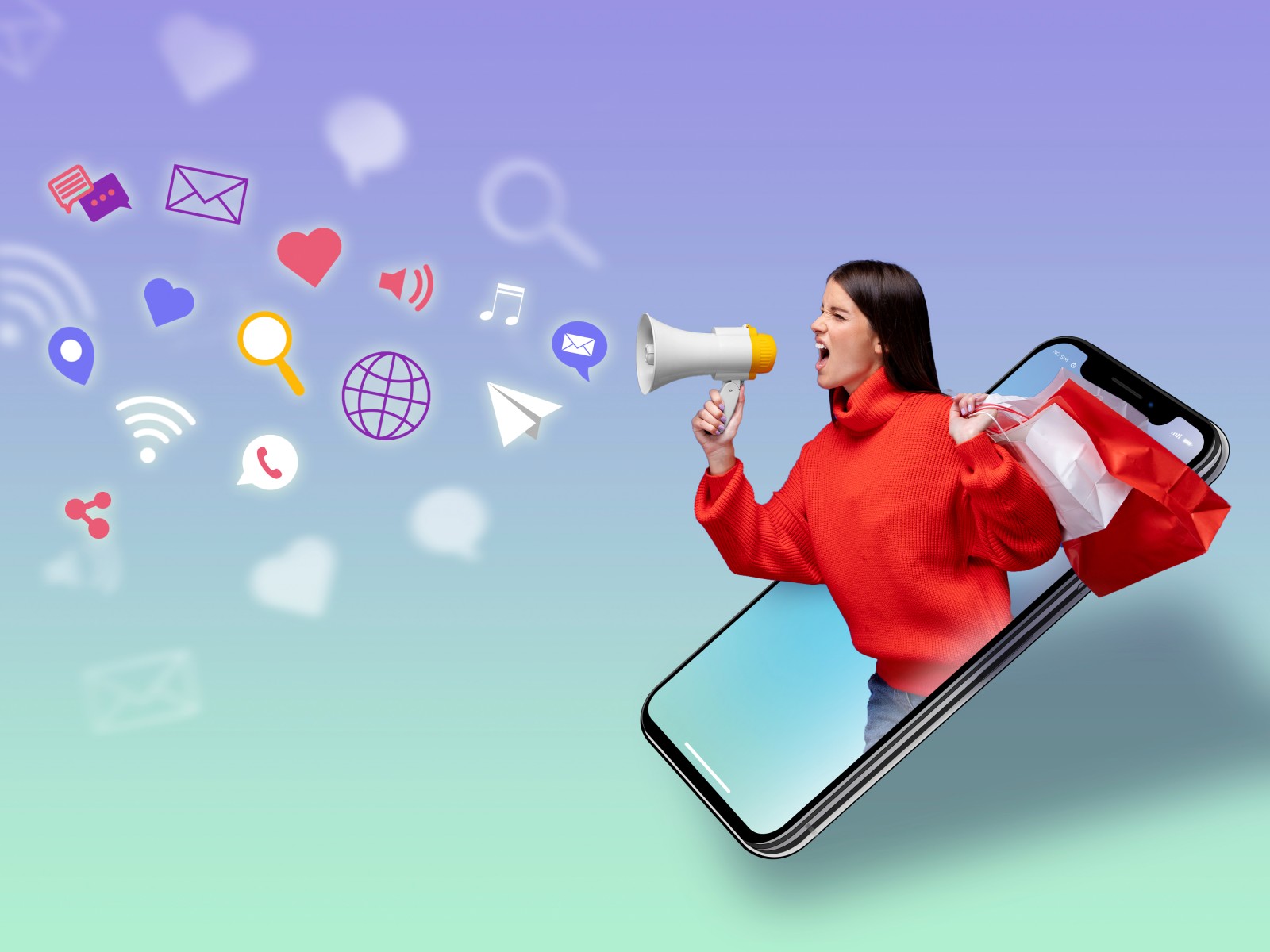The Rise of Digital Content: Navigating the Future of Media Consumption

The digital revolution has redefined how we create, consume, and distribute content. Once confined to physical mediums like print and broadcast, content today flows seamlessly across websites, social media platforms, streaming services, and mobile apps. This shift has not only democratized content creation but also introduced complexities in managing, monetizing, and distributing digital content effectively.
In this blog, we’ll explore the evolution of digital content, the challenges faced by creators and businesses, emerging trends, and how platforms like AiDOOS can provide innovative solutions to thrive in the ever-evolving digital landscape.
Digital content, encompassing everything from blogs and videos to podcasts and infographics, has evolved alongside technological advancements and changing consumer behaviors. Here’s how it has progressed:
Web 1.0 (Static Content): Early websites served as static repositories for text-heavy information. Content was primarily one-way, with minimal interaction.
Web 2.0 (Interactive Content): The emergence of social media platforms, blogs, and wikis enabled users to create and share content, ushering in the age of user-generated content (UGC).
Web 3.0 (Immersive and Intelligent Content): Blockchain, artificial intelligence (AI), and augmented/virtual reality (AR/VR) are redefining content, making it more personalized, immersive, and secure.
While digital content offers unprecedented opportunities, it also presents unique challenges:
Content Overload: With millions of blogs, videos, and posts published daily, standing out in a crowded digital landscape is a significant challenge.
Monetization Struggles: Finding sustainable revenue streams is a concern for many creators and businesses, especially with ad blockers and declining click-through rates.
Audience Fragmentation: Consumers are spread across multiple platforms, making it difficult to target and engage them effectively.
Rapid Technological Changes: Keeping up with new technologies and formats, such as NFTs or AI-generated content, requires continuous adaptation.
Copyright and Plagiarism Issues: Digital content is often vulnerable to theft and misuse, undermining creators’ efforts and revenues.
Analytics and ROI: Measuring the success of content in terms of engagement, conversions, and brand loyalty remains a challenge for businesses.
To address these challenges and capture new opportunities, businesses and creators are embracing the following trends:
Short-Form Video Content: Platforms like TikTok, Instagram Reels, and YouTube Shorts have made bite-sized video content incredibly popular, especially among younger audiences.
AI-Generated Content: Tools like ChatGPT and DALL-E enable creators to generate text, images, and videos efficiently, reducing production time and costs.
Interactive and Immersive Content: AR and VR are transforming storytelling by offering interactive experiences, from virtual showrooms to gamified advertisements.
Personalization: Advanced analytics and AI algorithms help deliver tailored content based on individual preferences, increasing engagement.
Sustainability in Content Creation: Businesses are focusing on eco-friendly practices, such as reducing data storage footprints and using green servers.
Monetization via Subscriptions: Many platforms, including Substack and Patreon, are empowering creators to monetize their content through subscriptions and memberships.
Content Atomization: Breaking down long-form content (e.g., webinars or reports) into smaller pieces (e.g., blog posts, infographics, short videos) to maximize reach and utility.
Technology is the backbone of digital content creation and distribution. Here’s how it’s driving transformation:
Content Management Systems (CMS): Platforms like WordPress and Drupal simplify the creation, editing, and publishing of digital content across multiple channels.
Artificial Intelligence:
Content Generation: AI tools help create written, visual, and video content faster.
SEO Optimization: AI analyzes keywords and trends to optimize content for search engines.
Sentiment Analysis: AI measures audience reactions to refine content strategies.
Blockchain for Content Ownership: Blockchain ensures transparent ownership and royalty distribution, addressing piracy and copyright issues.
Data Analytics: Tools like Google Analytics and HubSpot provide insights into content performance, helping creators refine their strategies.
Cloud Solutions: Cloud platforms enable seamless collaboration, storage, and distribution of content, especially for distributed teams.
Several brands and creators have successfully navigated the complexities of digital content. Let’s examine their strategies:
BuzzFeed: Known for its viral quizzes and listicles, BuzzFeed leverages data analytics to understand audience preferences and create highly shareable content.
Netflix: Netflix uses advanced algorithms to personalize recommendations, ensuring viewers spend more time on the platform.
National Geographic: By combining stunning visuals with engaging storytelling, National Geographic has built a massive following across social media platforms.
TED Talks: TED repurposes its long-form videos into shorter clips, blog posts, and podcasts, maximizing reach and engagement.
Platforms like AiDOOS are revolutionizing how digital content is created, managed, and distributed. Here’s how AiDOOS can help:
Access to Global Talent: Connect with expert writers, designers, marketers, and developers to create high-quality content tailored to your audience.
Cost Efficiency: Scale your content team up or down based on project needs, reducing fixed overhead costs.
AI-Driven Insights: Leverage AI tools for SEO optimization, audience analytics, and content recommendations to maximize impact.
End-to-End Solutions: From ideation and creation to distribution and analytics, AiDOOS provides comprehensive support for digital content projects.
Streamlined Collaboration: AiDOOS’s cloud-based platform ensures seamless collaboration between teams, even in remote work environments.
The future of digital content is bright, with opportunities for creators and businesses to innovate and connect with audiences in meaningful ways. Key drivers include:
Hyper-Personalization: Leveraging AI to deliver content tailored to individual preferences.
Immersive Experiences: Creating engaging, interactive content using AR, VR, and mixed reality.
Sustainable Practices: Reducing the environmental impact of content creation and distribution.
Decentralized Ownership: Using blockchain to empower creators and ensure fair revenue sharing.
As technology continues to evolve, platforms like AiDOOS will play a crucial role in enabling businesses and creators to stay ahead of the curve.
Digital content is more than just a medium; it’s a powerful tool for storytelling, education, and engagement. By embracing technological advancements, addressing challenges, and leveraging platforms like AiDOOS, businesses and creators can unlock the full potential of digital content.
The future belongs to those who adapt, innovate, and connect authentically with their audiences. Are you ready to transform your digital content strategy?